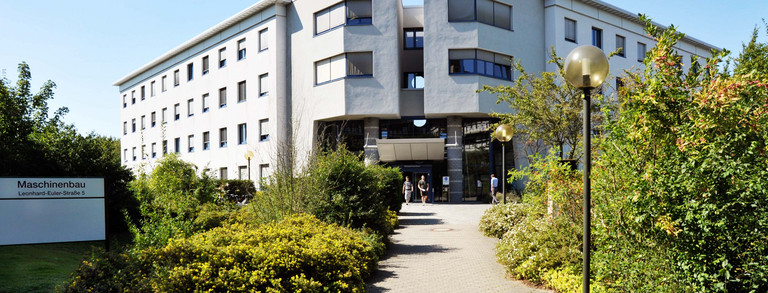Start of the AWExo field study at ABZ Oberhausen successfully completed

The RIF Institute for Research and Transfer e.V. (RIF) and the Institute for Occupational Safety and Health of the German Social Accident Insurance (IFA) are conducting this field study, funded by the Federal Ministry for Economic Affairs and Climate Action (BMWK), to investigate for the first time both the acceptance and effectiveness of exoskeletons in the construction industry. The aim is to prevent long-term overloads of the spine and intervertebral discs caused by lifting and carrying heavy loads as well as by constrained body postures.
Need for Action
Musculoskeletal disorders are the most common work-related illnesses in the EU, accounting for about 60% of sick leave days. Workers in the construction industry are particularly at risk as they must lift and carry heavy loads daily and work in unfavorable postures. Additionally, they are often exposed to other risk factors such as low temperatures and tool vibrations.
The study in detail
The AWExo field study uses passive back-supporting exoskeletons. These body-worn assistance systems are designed to relieve the back muscles and spine when lifting and working in bent-over positions. Passive exoskeletons operate with spring systems without external power supply and can therefore be used flexibly in various environments.
In mid-March, three trainees in sewer and masonry construction at the ABZ Oberhausen were equipped with individually adapted exoskeletons. After comprehensive training and awareness-raising about musculoskeletal disorders, the trainees tested the exoskeletons at their workplaces under real working conditions, together with experts from IFA and RIF.
During the study, the trainees were able to use their exoskeletons at their discretion for several days and documented their experiences in questionnaires and usage diaries. In addition, interviews were conducted to understand the reasons for acceptance or rejection of the devices. Another important part of the study was a several-hour biomechanical measurement of the support effect of the exoskeletons. The subjects were equipped with electrodes to measure back muscle activity and motion sensors to compare physical strain with and without the exoskeleton. This data aims to provide insights into the effectiveness of the devices in relieving the back muscles and spine. In May, similar tests were conducted with three trainees from road construction.
Outlook
The study will continue until 2025 and include further investigations in various areas of the construction industry, including system construction, refractory construction, component manufacturing, scaffolding, and window installation. These tests will take place both under controlled conditions in factory halls and on construction sites under real weather conditions. All investigated activities involve frequent lifting and carrying of heavy loads or frequent constrained body postures, such as bent-over positions.
Initial results are expected after the completion of data collection in early 2025 and could provide valuable insights into the potential uses of exoskeletons in the construction industry. The goal of this research is to contribute to the improvement of working conditions and the reduction of sick leave days in the construction industry.


